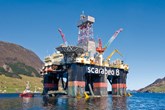Douglas-Westwood: maintenance moves
Published by David Bizley,
Senior Editor
Oilfield Technology,
A sustained low oil price environment is a challenging one, with ‘survival of the fittest’ being an undeniable reality of the sector.
Upstream E&P operators, in the past two years, have scurried to re-evaluate their operational business as usual (BAU) practices, implementing a myriad of measures ranging from immediate cost cutting steps such as the downsizing (or recently coined 'right sizing') of the workforce, the elimination of redundancies as well as the rebalancing of portfolios as they aspire to come out of this battle stronger.
Whilst complying with legislative standards, an apparent trend that has surfaced is the postponement of non-critical work which otherwise would have been sanctioned in a US$100 oil period. For some upstream operators, associated Inspection Repair & Maintenance (IRM) requirements have retracted by some 20 - 30% relative to pre-downturn levels.
While efforts to reduce bottom line figures have paid off and continue to be in play, E&P operators must acknowledge the inevitable threshold levels of maintenance, modifications & operations (MMO) and IRM spending that are required in the prevention of loss time incidents. It’s inevitable that a current ‘fix on failure’ attitude is not sustainable and operators need to re-assess the long-term sustainability of their approach given ever growing cost accruals.
As the recent World Offshore Maintenance, Modification & Operations Market Forecast 2017 - 2021 shows, perhaps the only positive spin on the current trough for the wider industry is a foreseeable wave of upstream MMO and IRM contracts that are due to be awarded in the coming years given existing backlogs that can no longer be postponed.
Michelle Gomez, Douglas-Westwood Singapore
Read the article online at: https://www.oilfieldtechnology.com/offshore-and-subsea/24102016/douglas-westwood-maintenance-moves/
You might also like
Saipem: third extension of contract with Aker BP for Scarabeo 8 for offshore drilling activities in Norway into 2028
Saipem announces that Aker BP has exercised a new option to extend the contract for the semi-submersible drilling unit Scarabeo 8, prolonging its deployment for an additional year.

